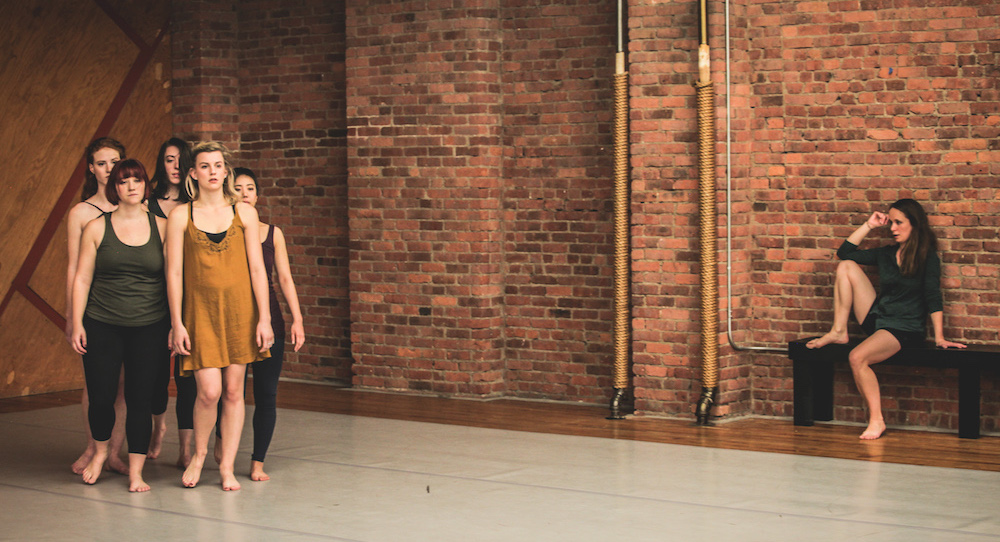Versatility. It’s become quite a buzz word in the dance world. It’s said that the more a dancer can do, the more likely it is that he/she will work consistently – and even sometimes be hired for a particular gig, show or company (particularly if the work requires a command of many different dance styles, or an ability to quickly pick up new styles).
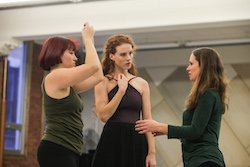
Heather Bryce (right) directing dancers. Photo by Art Heffron.
These types of requirements sometimes go beyond dance; if a dancer can sing, dance, play an instrument, even juggle or dribble a basketball with fancy tricks, he/she has a better chance of consistently getting work. Yet dancers only have so much time, energy and money for maintaining different kinds of training. Spreading resources out to many different kinds of training can also contribute to skill in many different areas but perhaps not excellence or mastery in any.
Jen Passios, dancer and administrative assistant/acting grant writer for Boston Dance Theater, says that “the pressure of being ‘versatile’ can be misconstrued to indicate that a mover should be swimming and doing Pilates and gymnastics and visual art and choreography and horseback riding, when, in reality, doing all of those things just burns dancers out, and helps them be okay at a bunch of conflicting physical ideas which – out of context – won’t actually serve them.”
Heather Bryce, artistic director and founder of Bryce Dance Company, also complicated the idea of “versatility” by emphasizing that it’s not necessarily the dancers with full command of a particular style that really captivate audiences; it’s the ones who emote and express themselves with clarity and honesty. All of this considered, what’s the balance? And how do dancers gain the right kind of stylistic diversity for them? Let’s dive in with four main recommendations!
#1. Take new classes, with new teachers, in the same or similar styles.
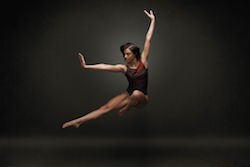
Jen Passios. Photo by Celso Enrique.
The act of learning different choreography alone can expand our versatility. “It’s all mental training,” Passios explains. “When we technically train in new forms, our brain enables our body to recognize the beginnings of new pathways. When we do that enough and need to jump into a new choreographer’s work, we can remember the experience of new learning and find a place of focus rather than a place of panic.”
Arguably, that building of neural pathways can happen more smoothly and gracefully within the same or similar styles – for instance, rhythm tap and Broadway tap or classical ballet variations and contemporary ballet – when there is variety and challenge, yet also similarities and a common ground unto which you can build. Certainly, training in tap and jazz and contemporary and ballet has wonderful benefits, but going as far as you are able in any one of them calls for training in all that the particular style has to offer.
A key way to do this is to study with a variety of teachers, and a completely new teacher every so often. Their movement qualities, way of teaching and other unique variables can activate that building of mental skills needed to learn new kinds of movement. Bryce defines this as “adaptability”, rather than “versatility”. “There are so many talented dancers out there,” she says. “I’m always blown away by how many show up to audition. The ones who really stick out to me are those who show those skills of adaptability, and to make the taught movement their own.”
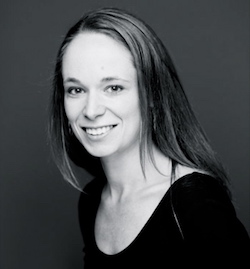
Heather Bryce.
#2. Train with the same teachers, in a typical training regimen, but keep looking for nuggets of discovery.
Ironically enough, not having to adapt can lead to strengthening a skill that can help you to adapt – that of recognizing, and then delving into, nuance. When you take class with the same teacher over an extended period of time, you’ll come to learn the subtle (or sometimes not so subtle) qualities that make their movement their movement. You’ll learn how to take it in to your body in a way that works for it, but also honors the teacher’s or choreographer’s vision and creative voice.
Bryce calls this “translation” – an ability, along with adaptability, that she looks for in auditioning dancers. If auditioning in movement that’s not so familiar to you, even if you don’t catch every count, every arm or every turn in an audition, you’ll offer something arguably deeper and more meaningful – those special nuggets of heart and spirit that really keep audiences spellbound. You’ll also be more ready to offer that on stage, when the time comes!
Keeping a training regimen will allow you to keep coming back to one, two, three or more (whatever may be possible for you) teachers, and make all of the above possible. Your routine, so long as it doesn’t put you in a psychological space where you find it upsetting when you have to break out of it (such as on holidays and other breaks), can also ground you in who you are as a technician and artist. “We train ourselves to come to the studio, to come on time, to find nuances in our own body and tune to them,” Passios describes. From routine can come a confident grounding that allows us to bravely encounter that which is new to us.
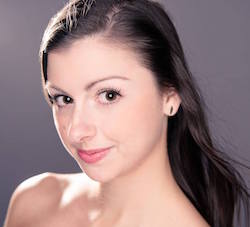
Jen Passios. Photo by Liza Voll.
Cross-training can be a strong part of this routine; apart from helping you to build and maintain flexibility and strength, it can teach you new and compelling things about your body. For instance, yoga can key you into the coordination of breath and movement, while Pilates can help you to gain a clearer connection to your deep core muscles.
#3. Develop your critical dance “eye”.
As another way to gain a keener receptivity to nuance, take time in rehearsal to watch the flavors fellow dancers apply to the movement – when others are going “across the floor”, or when the class is split up for “combos”. Perhaps this leads you to ask the teacher a meaningful question, and the response can help you get further inside and familiar with the movement.
Another way to do this is to take a critical eye to dance performances you view. Perhaps they’re in a style that you’re not as familiar with, which can broaden your awareness of the dance forms that are out there. Maybe they’re in a style that you are familiar with, and you’re in a better place to bring a constructively critical view. Both are advantageous!
Notice what makes the movement what it is apart from other choreographers’ work. Watch what each dancer uniquely brings to it. Try to go with a friend, and you can chat after about what you saw, what resonated with you and what didn’t. Challenge yourself to not just say something was good or bad but to articulate why something – for you – did or didn’t work. It’s all part of what will help you to grow as an artist, particularly your adaptability and versatility!
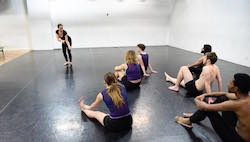
Heather Bryce with dancers. Photo by Arthur Fink Photography.
#4. Embrace who you are, with all you have to offer, and let go of perfectionism. Instead, capitalize on your strengths.
As a practical first step to embracing who you are, “vision out who you want to be as a dancer,” suggests Bryce. That will help you to do the work needed to “build the skills that will get you there,” she explains. If that means taking class in a form which you’ve never danced, or from a challenging teacher in one which you’re more experienced, do all that you can and let the rest be what it is, for now – until you have the chance to try again. Make all that you can out of what you can do – a gracefully controlled battement, on-point timing or just having the absolute most fun that you can have dancing. Let that confidence and joy sell you.
Bryce shares how she felt a bit out of her comfort zone in an African dance class in college. She could breathe easier with her teacher’s wise words: “find your small wins,” the teacher said. Bryce adds how, as a dance teacher, she sees students of all ages and abilities put up walls of fear and discouragement. Instead, she advises, “open your mind up to the possibility that you can dance a new form or style,” something perhaps not in your experience or comfort zone. Now go dance it!
By Kathryn Boland of Dance Informa.


